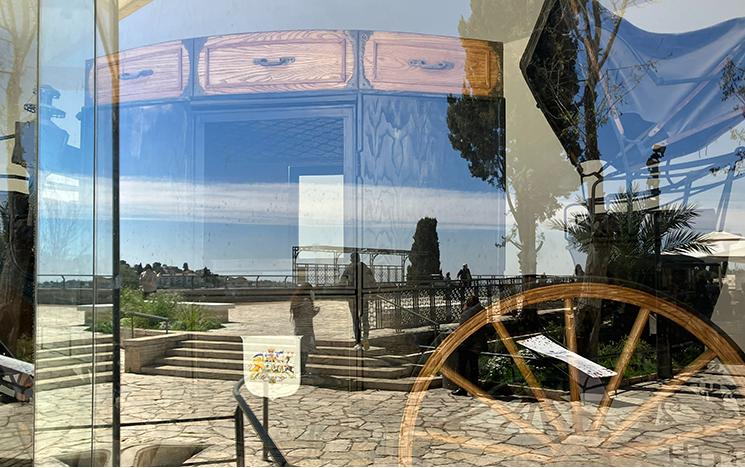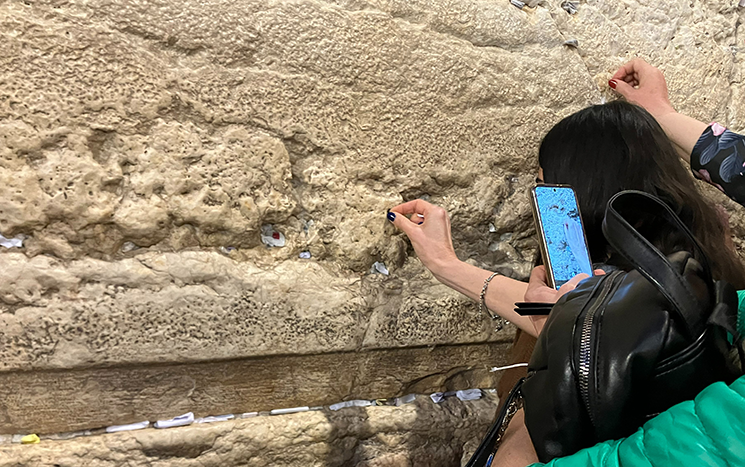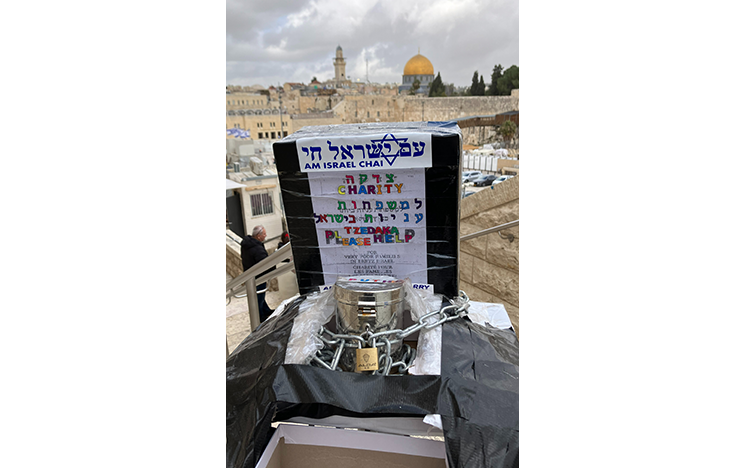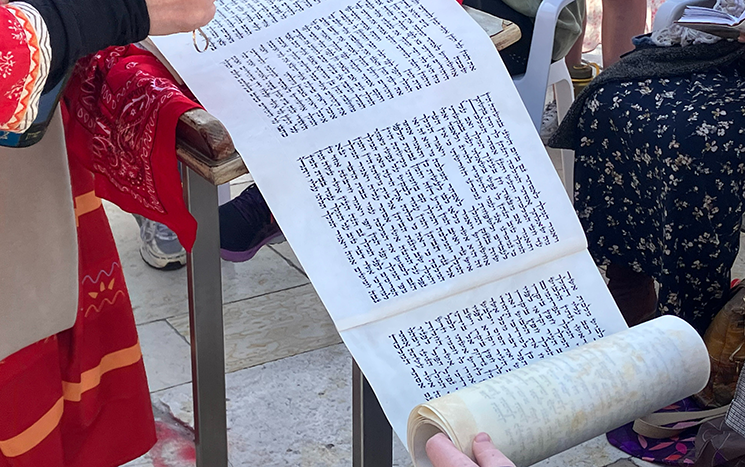Enchantment in Jewish Pilgrimage
Read about our work on British Jews and their relations to Jerusalem.

Image of Jerusalem Moses Montefiore Windmill and Carriage

Members of Birmingham Jewish community, Anthony Joseph, and his late first wife, Jane, during Israel trip. 1964

People leaving notes to God at Western Wall, Jerusalem

Image of Jewish Tzedakah box

Jerusalem, Shushan Purim, Women of the Wall group reading from Megillat Esther, against orthodox tradition
This workstream concentrates on British Jews and their relations to Jerusalem, a contested city that hosts sacred sites for all three Abrahamic religions. The Three Pilgrimage Festivals (Shalosh Regalim) mentioned in the Hebrew Bible are associated with Jerusalem. This religiously-prescribed travel and dwelling has contributed to the city’s economic growth. Indeed, rabbinic texts stipulate that pilgrims should spend money earned from the second tithe when visiting the Holy City. Since the foundation of Israel in 1948 and especially after the Six-Day War, Israel’s Jewish sacred geography has changed dramatically. While Jerusalem continues to be the most visited Jewish sacred site in Israel, other pilgrim destinations - among them sites of venerated biblical figures as well as tombs of Talmudic sages, rabbis and kabbalist, often located in Israel’s peripheral and economically deprived areas - are also attracting visitors and commercial enterprise.
Based among the diverse Jewish communities living in Birmingham and the West Midlands, WS4 considers questions of religiosity and entrepreneurship as it applies to diasporic Jews in pilgrimages/tours to sites of historical and religious significance to Jews. It illuminates on how pilgrimonics affect the sense and politics of place in Britain as well as Israel’s evolving sacred Jewish geography in and beyond Jerusalem with expanding commercialisation, and what role Jewish conduct and concepts such as tzedakah (righteousness) as an ethical obligation play in charitable giving.
Workstream Lead Gabriele Shenar
Workstream Blog
Sukkot between Jerusalem and Birmingham: a short film by Gabriele Shenar and Tarun Jasani
- Video transcript
Coming soon.
Urban Transcendence - Jerusalem and Tel Aviv: a short film by Gabriele Shenar and Tarun Jasani
- Video transcript
Coming soon.